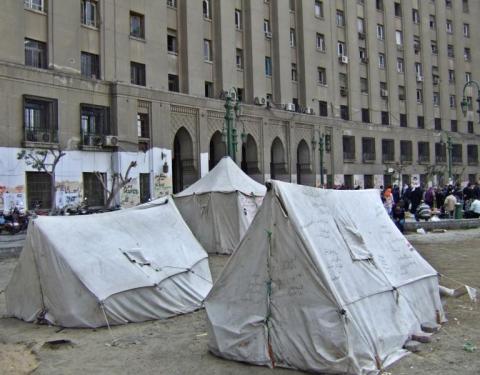The Contract

There is something treacherously seductive in the shadow play about the artist and the city, that is performed by certain discourses on gentrification and the creative class. Feeding off old-fashioned notions of the avant-garde, it stages the artist as an instrument of change, a positive influence, one whose mere presence is a symptom of a declining neighbourhood's recovery.
It is seductive, because it binds the fate of the artist to that of the city, in a mutually affirming and self-congratulatory logic. Optimistic and forward-looking, it presents the city as a place that is perpetually in development, a place that just doesn't quite live up to its potential yet. The city as a prospect. An ecosystem for the budding initiatives of tomorrow's cultural entrepreneurs.
In this life-celebrating narrative, it is easy to overlook how, as in a true ecosystem, the relationship between artists and the city is equally defined by ruin and decay. In their eternal search for cheap space, artists are naturally drawn to the obsolete. Abandoned factories, empty warehouses, decommissioned schools. Buildings that have fallen from grace. A simple reversal of the plot would cast the figure of the artist as a ghost, rather than as a sign of hope and renewal. A spooky reminder of broken promises, or of some unresolved trauma.
How appropriate that would be, now that the cheerful managerial rhetoric of innovation and infinite growth is being replaced with incantations of financial crisis and impending economic doom. For if there is anything to be learned from the distress signals that are being sent out by the real estate market, it's that the city was indeed built on promises that couldn't be kept. A proud Atlantis, cast adrift on a volatile sea of insubstantial financial derivatives.
Is it any wonder that those who have lost faith in this sinking social order, mill out into the streets at any given opportunity? Determined not to let themselves be dragged down by tombs of stone and reinforced concrete, they occupy the city squares in flimsy tents instead, as if to prepare to abandon ship. With their eyes set on the horizon, they owe this drowning world no explanations, nor salvation.
Perhaps there is some redemption to be found in defining the role of the artist as that of the rear guard, rather than as the personification of progress and excellence. A gloomy janitor, lingering in the shadows of this ghost town, locking up after the living. Its ignoble task: to escort this fraudulent civilization into its decline, and to choke it, lovingly, with delicate, artistic fingers, lest it should try to come up for one last gasp of air.
This text was commissioned by Alba Colomo, for her curatorial project Research by walking, which was exhibited in Het Wilde Weten in Rotterdam, and in Sala Rekalde in Bilbao, in October 2012.
Published in:
- Sala Rekalde
Comentarios
Jaime
Vie, 19/10/2012 - 09:02
Great text! It reminds me of
Great text! It reminds me of The Library of Babel, by Borges. The artists as the last librarians quietly guarding the empty rooms full of books that no one will read and that don't make any sense, anyway. "Quizá me engañen la vejez y el temor, pero sospecho que la especie humana - la única - está por extinguirse y que la Biblioteca perdurará: iluminada, solitaria, infinita, perfectamente inmóvil, armada de volúmenes preciosos, inútil, incorruptible, secreta."